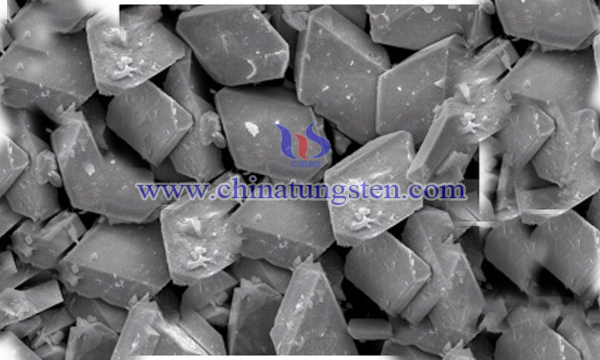Nd-doped Bismuth Tungstate Photocatalyst
- Details
- Category: Tungsten Information
- Published on Wednesday, 06 February 2019 22:27
Bismuth tungstate is a new type of photocatalyst material, which is easily stimulated by visible light, can degrade organic pollutants. The reaction conditions are mild, the degradation is thorough, and the environment is clean. Bismuth tungstate has become one of the hot technologies in the field of pollution control.

Neodymium is one of the most active rare earth metals. It has paramagnetism and can quickly darken in air to form oxides. It reacts slowly in cold water and quickly in hot water. Neodymium doping into bismuth tungstate requires the following steps:
(1)Massage Erbi 10:20:0.1-0.08, Na2WO4·2H2O, Bi (NO3)3·5H2O and NdO3 were respectively weighed and dissolved into sodium tungstate nitric acid solution, bismuth nitrate nitric acid solution and neodymium oxide Nitric acid solution with 2-8ml concentrated nitric acid.
(2)Under magnetic stirring, sodium tungstate nitric acid solution and neodymium oxide Nitric acid solution were added to bismuth nitrate solution drop by drop to obtain white suspension solution. The suspension solution was stirred for 30 minutes.
(3)The suspension solution was loaded into the reactor lined with PTFE. After 6 hours of constant temperature reaction at 453K, the light yellow rhombic bismuth tungstate photocatalyst was obtained by separation, washing and drying.
The prepared Nd-doped bismuth tungstate photocatalyst has no agglomeration phenomenon, and its large specific surface area can be observed under the electron microscope. It can be used for sewage treatment to test its performance. The experiment of degradation of acid chrome blue K, neutral red and bright green under visible light was designed. The photocatalyst was irradiated under visible light of 300 W xenon lamp for 60 minutes with 100 mL concentration of 12 mg/L of acid chrome blue K and neutral red. The decolorization rate of acid chrome blue K, neutral red and bright green reached more than 98%.
- Tungsten Oxide Manufacturer & Supplier, Chinatungsten Online: www.tungsten-oxide.com
- Tungsten News & Prices of China Tungsten Industry Association: www.ctia.com.cn
- Molybdenum News & Price: news.molybdenum.com.cn
- Tel.: 86 592 5129696; Fax: 86 592 5129797; Email: sales@chinatungsten.com



 sales@chinatungsten.com
sales@chinatungsten.com